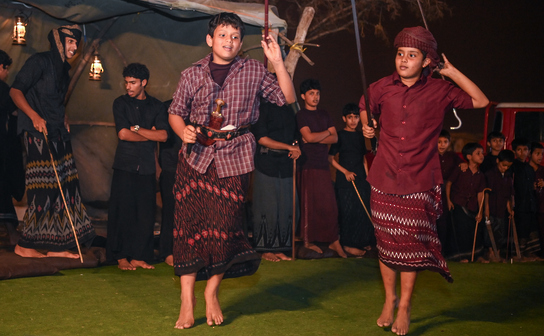
Salalah: The mountain villages of Dhofar Governorate undergo an extraordinary natural transformation during the Khareef (monsoon) season, as life blossoms across the verdant slopes shrouded in mist. With the first rains, the countryside stirs to life in a scene that reflects the profound connection between man and nature.
The Khareef season in Dhofar marks a pivotal annual milestone in rural life, reviving age-old customs, inherited preparations, and manifestations of community cohesion and reliance on natural resources, as affirmed by several citizens speaking to Oman News Agency (ONA).
Bakhit Said Da'an Al Shahri says: "Khareef is our sustenance. We prepare for it from early June—repairing livestock pens, gathering firewood, storing fodder, and preparing water tanks to collect rainwater, which we depend on for drinking and cooking throughout the season."
In pastoral life, camel herders follow a seasonal rhythm adapted to weather patterns. Said Mohammed Al Mashaikhi, a camel owner, explains that herders move their camels to less humid areas, such as the cotton-growing plains behind the mountains, before returning them to higher ground after the rains cease, selecting grazing routes daily based on grass availability.
The "Makhraf"—a temporary camel shelter—doubles as a social gathering spot where guests are welcomed with pastoral offerings like fresh milk and daily conversations are exchanged.
Salim Mussalam Al Amri highlights how the season intertwines agriculture, tourism, and spirituality, noting that mountain villages witness an influx of local and international visitors during Khareef. This communal vibrancy prompts many employees to schedule their annual leave around this period.
Meanwhile, rural women play a vital role in organizing seasonal life through farming, traditional crafts, and preparing local products. Mazoon Agham Al Shahri says: "We used to thatch cow sheds (Duqoof) with grass and fertilizer, prepare hides for churning milk into ghee, and stitch traditional attire for celebrations, as Khareef is a season of weddings and visits."
She adds that modern infrastructure and services have transformed rural lifestyles, with better-equipped homes and barns, piped water, and electrical tools freeing women to focus on cultivating crops like cowpeas (Al-Dougar), corn (Al-Mahindi), and millet (Al-Thayrit).
Khareef Dhofar season paints a recurring portrait of life cradled by nature, embodying the continuity of practices and traditions passed down through generations. Each year, it weaves together heritage and renewal, man and land, in an enduring embrace.